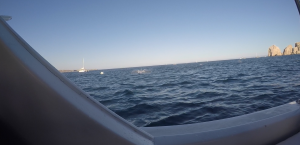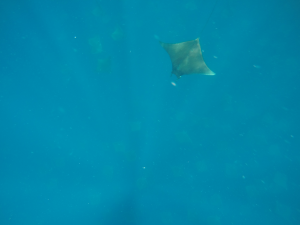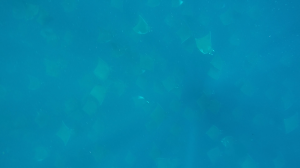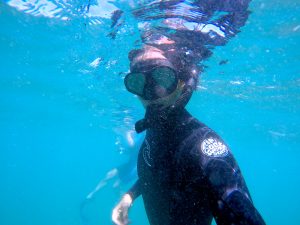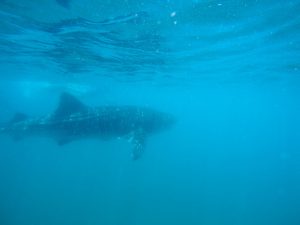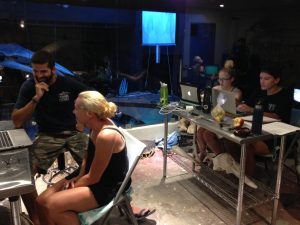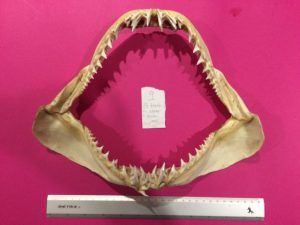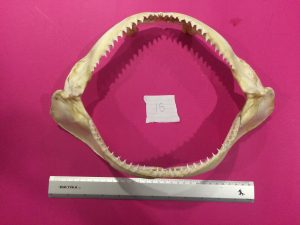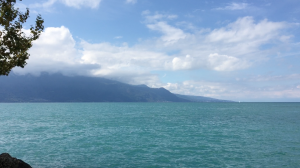The second module of the program included shark surveys off the coast of Cabo San Lucas. We were searching for pelagic species such as short fin makos (Isurus oxyrinchus), smooth hammerhead (Sphyrna zygaena), silky shark (Carcharhinus falciformis), and blue sharks (Prionace glauca). We had to record each encounter, take photos of any obvious markings for the photo ID, as well as record the behaviour of the shark towards the divers. We had two days scheduled for fieldwork in Cabo San Lucas and, unfortunately, on both days no sharks stayed long enough for the team to jump in the water with them. However, on the second day we spotted a smooth hammerhead. The shark diver leader preceded to start the chumming session and it was clear that the shark bit the bait, but didn’t stay long enough. The subject of chumming is a very controversial one and we received a series of very informative lectures prior to the field work days. We learned that there are two main ways to attract a shark: organic and inorganic. Organic provisioning would be the use of bait, like the head of a tuna and you would place a rope on the side of the boat and wait to get the attention of the shark. Chumming is often used in conjunction with baiting and it involves the use of oils or liquids, or fish body parts (sardines are often used because of their fatty properties). We also learned that some species don’t react the same to organic provisioning which is when inorganic provisioning occurs. Species like the mako sharks are very visual predators (large eyes), and they react to shiny or colourful preys. Therefore, items like plastic squids or fake seals would be most likely utilized. Very little is know about the effect of shark provisioning, and there is little to no research available on the subject. Part of the research done by The Shark Odyssey involves recording shark behaviour towards the bait, the chum, or the inorganic materials and building a records database to help determine if there are indeed behavioural changes.
Even though we didn’t have the opportunity to swim with sharks on this section of the program, I was not disappointed by any means. We learned a lot about conservation issues regarding shark populations, and we finished the day swimming with a massive school of mobula rays (Mobula munkiana) with hundreds of individuals. They were most likely mating since you could distinguish scars on the left side of some of them. They were also rows of mantas swimming and turning, most likely a female followed by males, as this is a mating behaviour observed in other species of mantas.
